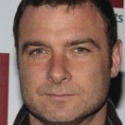TV Tour Bus: 'The Wire'

The TV Tour Bus is back and ready to take everyone on a new tour. After the last time when we took a tour of ‘The Shield,’ we mentioned how it is a show often said in the same breath as ‘The Wire.’
Perhaps no show is more appropriate to take a tour of than HBO’s ‘The Wire.’ The Baltimore setting colors every season of the show, moving from the streets, to the docks, to the schools, and all across the city. Unlike a lot of shows, ‘The Wire’ was actually filmed on location in the city represented.
I’ve never traveled to Baltimore, and if you haven’t either, don’t worry. This bus tour lets you enjoy the Baltimore setting as seen through the eyes of McNulty, Bunk, Stringer, Omar, and every other character, without you having to get out of your seat. But let’s not waste any more time, because we’ve got a lot of ground to cover in this one.
 Since the setting flows from season to season, this tour will move the same way, starting with season one. Our first stop in the first season is the low-level criminal drug trade area known as “the pit.” D’Angelo Barksdale, nephew of West-Baltimore kingpin Avon Barksdale, ran the pit as punishment for his careless actions that occurred before the show began.
Since the setting flows from season to season, this tour will move the same way, starting with season one. Our first stop in the first season is the low-level criminal drug trade area known as “the pit.” D’Angelo Barksdale, nephew of West-Baltimore kingpin Avon Barksdale, ran the pit as punishment for his careless actions that occurred before the show began.
There’s no glamour to this side of the drug world. To show how low-level the pit is, kids run around, with some of them helping to move the stash. The patch of grass has some old furniture on it, strewn about like corpses from this world. The pit is surrounded by walls of apartment buildings, making the place look like a prison yard. There is no escaping this life.
On the side of the law, the misfit unit thrown together to do case work—who would later become the  Major Case Unit—is given an office in a basement that has not much more than electricity, phones, and some old furniture. If we look over at this desk here we can see miniature furniture from Lester Freamon that looks like it’s in better shape than anything in this office. The team’s office parallels the low-level nature of the pit, and shows the department’s lack of resources, which will only become more of a problem as the show moves forward.
Major Case Unit—is given an office in a basement that has not much more than electricity, phones, and some old furniture. If we look over at this desk here we can see miniature furniture from Lester Freamon that looks like it’s in better shape than anything in this office. The team’s office parallels the low-level nature of the pit, and shows the department’s lack of resources, which will only become more of a problem as the show moves forward.
Let’s hop ahead to season two. And, wow, what a change this is. We’re at the Port of Baltimore. I don’t think there has been a more jarring setting change since the jump cut in ‘2001: A Space Odyssey,’ that switched from  prehistoric apes discovering tools to futuristic space travel. And with that change is also a whole new set of characters. The setting change is a bold move yet the show managed to it pull off.
prehistoric apes discovering tools to futuristic space travel. And with that change is also a whole new set of characters. The setting change is a bold move yet the show managed to it pull off.
Hundreds of industrial containers cover the docks, they all look basically the same, coming in and out each day, and anyone of them can be the source of drugs coming in to the city. It’s a puzzle for our detectives to find out where the drugs might come in, and more accurately, it’s an exercise in frustration.
Let’s get away from all the noise and head over to this quiet diner. It’s clean, but nothing fancy, exactly  how smuggler “The Greek”—who isn’t actually Greek—wants it. It’s as low-profile as possible. It’s so plain and unassuming that it might as well be another container on the docks. It shows a contrast from season one’s drug dealing in plain sight.
how smuggler “The Greek”—who isn’t actually Greek—wants it. It’s as low-profile as possible. It’s so plain and unassuming that it might as well be another container on the docks. It shows a contrast from season one’s drug dealing in plain sight.
Alright, now we’ll move away from the periphery and back to the heart of Baltimore for season three. We’re on a corner. There’s some shell casings, blood, bags with money and drugs. The  corners become a big part of season three, as Major Colvin, nearing his retirement, wants to do some “real” police work and get the drugs away from the public.
corners become a big part of season three, as Major Colvin, nearing his retirement, wants to do some “real” police work and get the drugs away from the public.
This leads us to this small corridor known as “Hamsterdam.” Sure, the pit and the corners had dealing in plain sight of the public, but this is completely brazen. For the police, this is simply a numbers game. If most of the crime is happening here, that means the crime statistics are dropping in the Western District. Even though it’s out in the open, it’s  away from most of the public. Yet we can remember Bubbles' walk through Hamsterdam pushing his shopping cart, seeing the horrors, and the realization that this may not be the solution to Baltimore’s crime problem.
away from most of the public. Yet we can remember Bubbles' walk through Hamsterdam pushing his shopping cart, seeing the horrors, and the realization that this may not be the solution to Baltimore’s crime problem.
The skewed numbers for the crime rate is at least good for some redevelopment. Here’s a nice building, but it’s unfinished. It also looks to stay that way. This blood stain here is from when Stringer Bell took a few bullets. As we look out the window we see the sign for B&B Enterprises. The redevelopment dies along with Stringer.
 No time for stopping the tour bus as we move to this little office here. It’s season four and Carcetti is using the crime problem to run for mayor. After using Hamsterdam as a political chip against his opponent, Carcetti is positioned well to win. This office sums up a political campaign with its weird wallpaper, a dartboard, and a nude picture—some ugliness, some strategy, and some sleaze. Carcetti gets familiar with these walls as he spends hours cold calling on the phone to fundraise for the campaign. The race for mayor isn’t won giving speeches; it’s won behind closed doors.
No time for stopping the tour bus as we move to this little office here. It’s season four and Carcetti is using the crime problem to run for mayor. After using Hamsterdam as a political chip against his opponent, Carcetti is positioned well to win. This office sums up a political campaign with its weird wallpaper, a dartboard, and a nude picture—some ugliness, some strategy, and some sleaze. Carcetti gets familiar with these walls as he spends hours cold calling on the phone to fundraise for the campaign. The race for mayor isn’t won giving speeches; it’s won behind closed doors.
We move inside some more closed doors. It’s a vacant building with boards covering the windows. This  is the economic rebirth that never happened. There’s piles of plastic often used for insulation vapor barriers, but that’s not what it’s being used for here. The plastic wraps around piles of bodies, all hits from Marlo’s enforcers—Partlow and “Snoop.” To the police this looks like the work of a serial killer. The scary part is that this is what happens when crime becomes efficient.
is the economic rebirth that never happened. There’s piles of plastic often used for insulation vapor barriers, but that’s not what it’s being used for here. The plastic wraps around piles of bodies, all hits from Marlo’s enforcers—Partlow and “Snoop.” To the police this looks like the work of a serial killer. The scary part is that this is what happens when crime becomes efficient.
Maybe the solution isn’t with policing, but with education. Schools become another focus of season four. It’s a bit rough in some areas, but the school is clean. The hallways are neat, the desk are lined up in an orderly fashion. Unfortunately, order becomes a difficult balance throughout the season. Too little order and there is chaos in the classroom and no  one can learn, too much order and the kids get frustrated and some will drop out. With no potential for work, some get involved working the drug corners.
one can learn, too much order and the kids get frustrated and some will drop out. With no potential for work, some get involved working the drug corners.
Finally, we’ve arrived at our last stop: season five of ‘The Wire.’ The show wraps everything up by looking at the newspapers that seek to uncover the truth about Baltimore’s crime. The paper appears productive. There’s desks, computers, stacks of paper, plenty of reference books. But as much real work as reporters get done, there’s plenty of problems. Creator David Simon deals his coup de grace against capitalism as the paper, despite being profitable, needs to downsize as it competes with online journalism. This leads to desperation, and Gus begins to see the spirit of journalism, the pursuit of  truth, start to slip away as reporters start manufacturing stories.
truth, start to slip away as reporters start manufacturing stories.
So that concludes our tour. Sorry we didn’t have time to do all the little spots like Prop Joe’s Clock Repairs, or Orlando’s, or Cutty’s boxing club, or Pimlico, or Camden Yards. Anyone who feels up to it can join us for a drink or a song at Kavanagh’s Irish Pub.
- HBO
Show:
- The Wire
Sep 24th, 2013, 11:38 am
Images courtesy of HBO
thanks for the memories another one of the all time greatest shows!!
Thanks for this.
The Wire was such a remarkable show.
Next Article
Review: 'Marvel's Agents of S.H.I.E.L.D.' Embraces the Fun of ComicsPrevious Article
Primetime Ratings, Saturday, 9/21/13 & Sunday, 9/22/13
Aaron Sorkin's HBO Series Has A New Title?
Aaron Sorkin, the current king of scriptwriting, has been developing a new..
Liev Schreiber To Continue As HBO Sports Voice
Liev Schreiber doesn't need to fear anymore. Well, not that is was a great..




